| 1 | Kirtland’s snake |
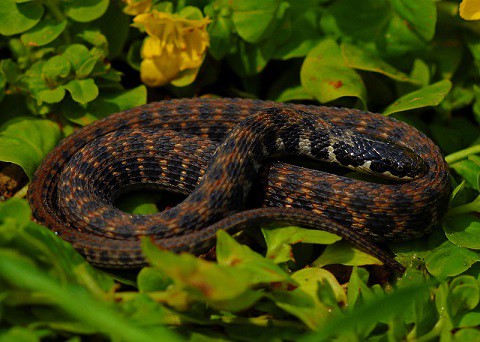
A harmless US snake most concentrated in Ohio and Pennsylvania. Kirtland’s snakes live in moist grassy fields, and aren’t adventurous in the slightest. They’re happy to stay within 1 field-stream ecosystem their entire lives, as this is a snake which prefers not to draw attention to itself.
Kirtland’s snakes also have their own burrows which they retreat to, which are usually prairie crayfish or devil crayfish dens. In the morning, they poke their head out and get to work, hunting their slug and earthworm prey. Kirtland’s snakes measure 50cm, and these small creatures are what they’re restricted to. While Kirtland’s snakes appear in vacant lots occasionally, they have no wish to advertise themselves. They’re always found under cardboard, sheet metal, and random discarded trash, while in grassy fields, they hide in the safety of vegetation.
Kirtland’s snakes lack any aggression, rarely biting even if picked up. All their survival instincts are geared towards flying under the radar, leaving the overconfident black racers to get carried off by birds. Kirtland’s snakes love burrows, shelter, and peaceful places where they don’t have to fight constant wars with rival serpents.
| 2 | Querétaro dusky rattlesnake |

A rattlesnake of central southern Mexico, with a maximum length of 67.8cm. Crotalus aquilus lives in rolling highlands and moves by day, particularly in early morning and late afternoon.
Instead of stalking innocent people through villages at midnight, the Querétaro dusky rattlesnake has chosen a more relaxed life. They live high in Mexico’s sunny central plateau, at altitudes of up to 3110 metres. Crotalus aquilus spends time in grasslands and forests, but also open rock outcroppings, where they bask in the glorious sunlight, to equally glorious views. Crotalus aquilus mostly lives far from humanity except for a few villages and cattle herders. The hustle and bustle of a rainforest is foreign to the Querétaro dusky rattlesnake.
Their short length of 50cm makes them easy to overlook, even if you find their exact mountain slopes. They’re also relatively calm, and don’t always alert you with a piercing hiss whenever you walk past. The Querétaro dusky rattlesnake is confirmed to eat other snakes, including garter snakes and Mexican bullsnakes. While this is common in the coral and kingsnake families, it’s rare among rattlesnakes.
| 3 | Faded black-striped snake |
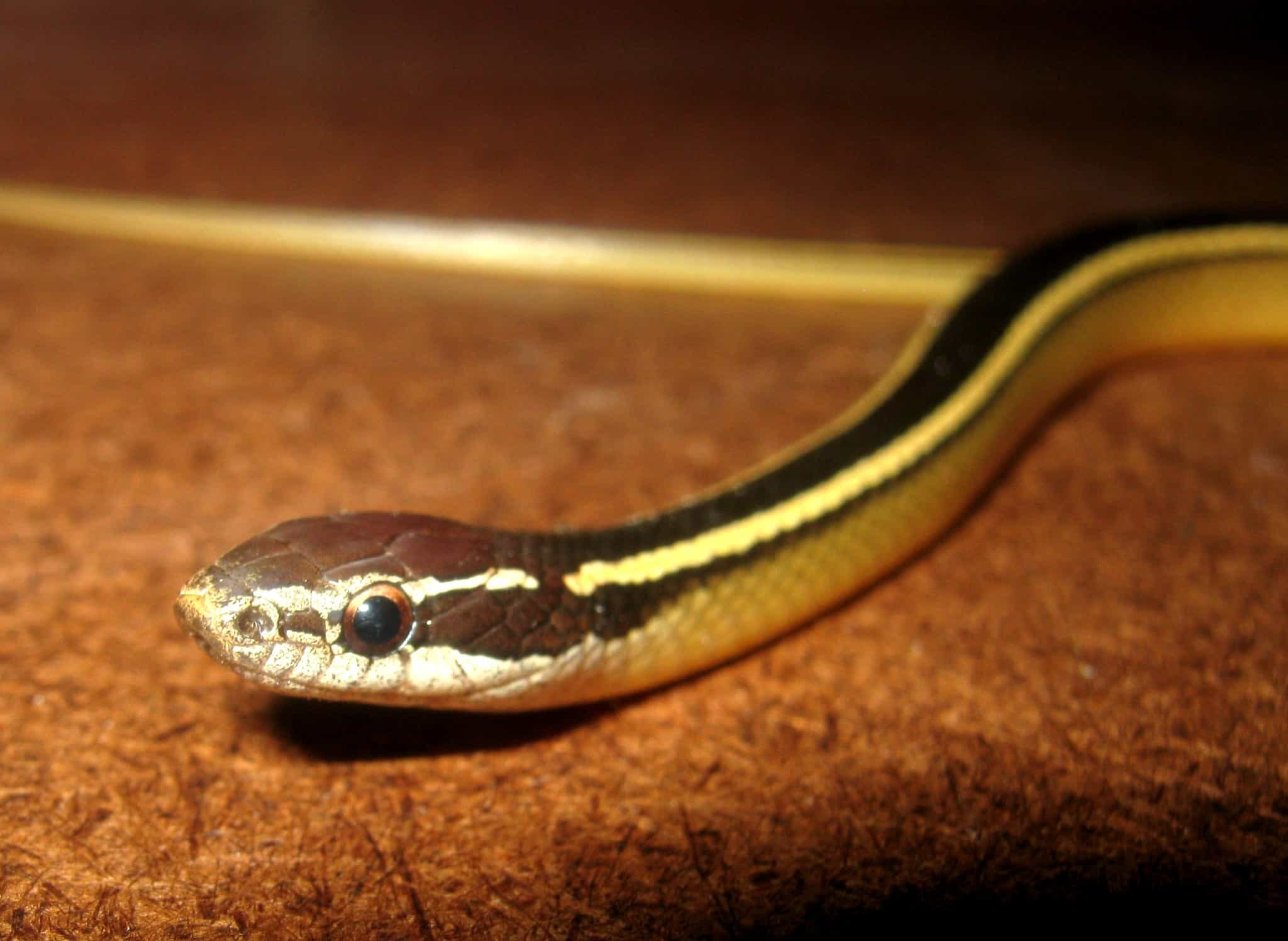
A 40cm species of Belize and Guatemala. This snake lives near villages, but flies under the radar by never kicking up a fuss, and lacking any gimmicks which western science magazines might report on. Faded black-striped snakes have a mild venom which they rarely use on humans, which causes just a slight stinging. They reserve it for their common toad and veined tree frog prey, which they rapidly disable and swallow without anyone really paying attention.
Coniophanes schmidti likes mixed habitats where they can easily do their thing in peace: forest borders, sparse tree plantations, open ground with shrubs and wetland borders. They have no acrobatic skills, nor brutal fangs, yet they still manage to survive and thrive in rural Belize.
Coniophanes schmidti would almost certainly lose a battle with the neighbouring fer-de-lance or Central American coral snake, but their bodies are pale enough to provide great camouflage, keeping them invisible unless they’re on the move, leaving their sanctuary temporarily. This species belongs to the 17 member Coniophanes family.
| 4 | Striped crayfish snake |
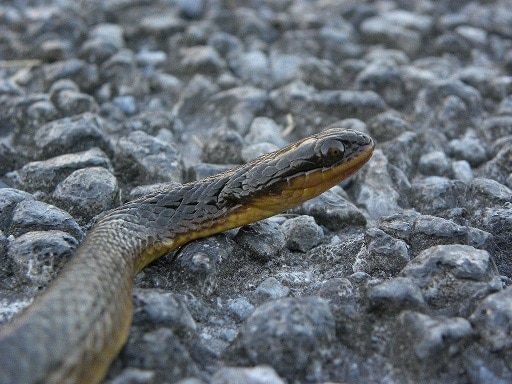
The striped crayfish snake numbers up to 1 million in Florida and Georgia, yet you wouldn’t know it. This species lives in wide rivers, very rarely coming to shore, avoiding humanity’s gaze. They’re active by day, and prey on hard-shelled adult crayfish, with specialised teeth to grip them. These crayfish fight back by plugging their burrows behind them and blocking the entrances.
These constant duels happen every day, but far from people’s attention. Striped crayfish snakes are determined to fly under the radar and will dive to the bottom of their fast-flowing rivers if spooked. They hide their head in their coils if picked up, and generally do whatever they can to avoid a fight.
Mankind has made it easier for striped crayfish snakes to stay hidden, due to the spread of invasive water hyacinth. This thick, matting South American plant sends out rapidly multiplying daughter runners, which can eventually choke out an entire river surface. The oxygen deprivation kills many fish below the surface, but in Florida, striped crayfish snakes are a rare native species to benefit from water hyacinth. The green mats are perfect for avoiding great egrets and great blue herons, and helping them to avoid people’s gaze even more.
| 5 | Slender smooth snake |
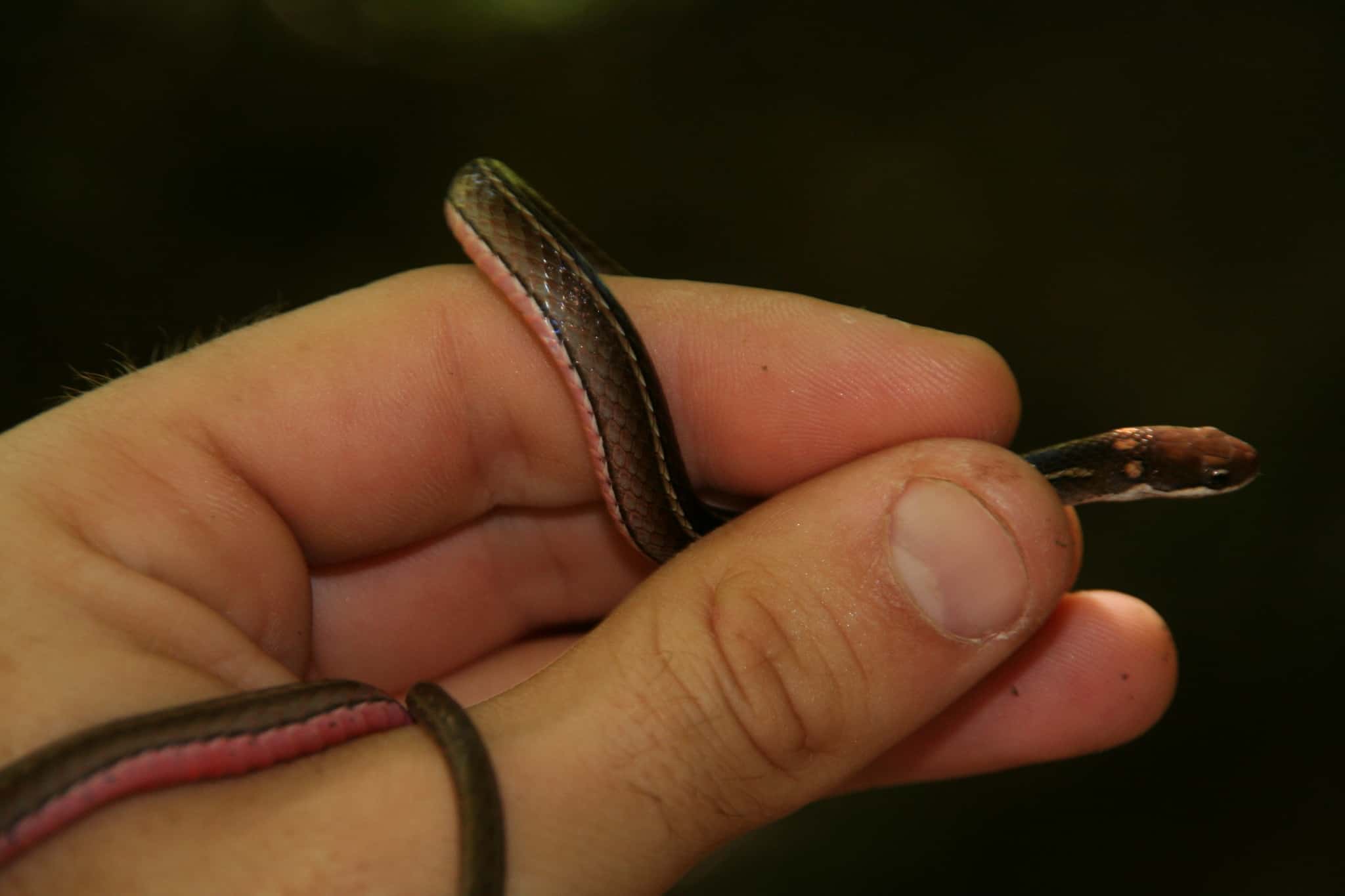
Madagascar is already a place where snakes get little attention, as there are no notorious venomous species. Dumeril’s boa is the most famous native species, as it’s popular in captivity worldwide, but there’s many subtler characters which haven’t been explored. One is the slender smooth snake (Liopholidophis rhadinaea), a harmless species, part of an 8 member family found only in Madagascar.
Slender smooth snakes have an extremely long tail and stick mainly to the ground. They live in dense forests with little sunlight penetration, and by tucking themselves away, Liopholidophis rhadinaea can escape the attention of pretty much the whole world. Slender smooth snakes play dead when picked up, going floppy and lifeless. They just want to be left in peace, unless there’s a female Liopholidophis rhadinaea you can introduce them to.
Their biggest fear is that the world’s media spotlight suddenly swings their way. Luckily, Liopholidophis rhadinaea lacks any noteworthy gimmicks, no ability to spit bees at you, or the first snake to eat berries. Their bright pink belly is their most memorable feature, plus one of the largest gender size gaps. The male record for Liopholidophis rhadinaea was 74.9cm, versus 42.4cm for females. The biggest threat to Liopholidophis rhadinaea is deforestation, which is progressing rapidly in Madagascar as of 2023.
| 6 | Dwarf reed snake |
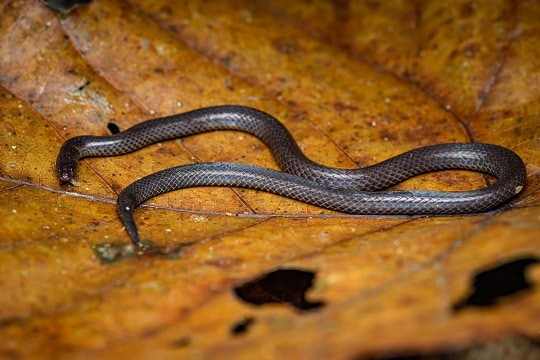
A non-venomous snake of southern Thailand, peninsular Malaysia and Singapore. Dwarf reed snakes measure just 20cm and have miniscule teeth which cannot pierce human flesh. With Indochinese spitting cobras charging around like maniacs, and reticulated pythons so huge that they’re unable to hide (and kind of an arrogant snake anyway), dwarf reed snakes take a different approach. They can’t compete in an all-out arms race, but they can compete in being a stealthy forest serpent which lives its life without attention.
Dwarf reed snakes have the unique skill of cartwheeling to escape their enemies, but otherwise move along the forest floor slowly and stealthily. In southern Thai forests, there’s dozens of things that might catch your eye over a dwarf reed snake. There’s green pitvipers for one thing; these could be hissing at you from a branch, while the dwarf reed snake silently watches on as a spectator.
This species has one flaw in its plan: iridescent colours, which materialise when light strikes their scales. This could be a torch beam, with a flash of rainbow suddenly alerting you to the hiding serpent. Dwarf reed snakes are almost always found below a cover object or underground.
| 7 | Mueller’s ground snake |
Another almost blind snake, with visibly shrivelled dots which barely resemble eyes at all. Not that you’re likely to encounter this species. Mueller’s ground snakes mainly live in the forested Cardamom mountains, which cover mostly western Cambodia, and also extreme southeastern Thailand.
Not only is finding Mueller’s blind snake’s forest domain a steep challenge, but they’ll probably be hidden once you arrive. Mueller’s blind snake (Argyrophis muelleri) lives in a mountain range with few settlements and little deforestation, an untouched serpent heaven if there ever was one. They measure 48cm, and are black and shiny, contrasting sharply with a snowy white belly. While slow and careful, Mueller’s blind snake can flee at surprising speed if provoked, thus making getting your photograph all the more impossible.
Argyrophis muelleri is barely researched, and there are few anecdotal sightings to extract information from. They probably prey on earthworms, insect larvae, and maybe ants. They almost certainly lack venom, and they likely fall victim to ophiophagous snakes like the king cobra and Malaysian blue coral snake.
| 8 | Southern smooth snake |
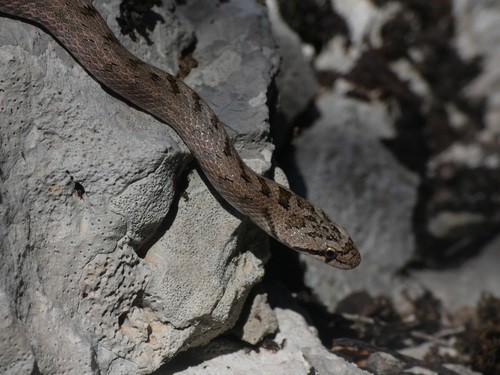
The southern smooth snake smoothly stays under the radar of most Italians, while asp vipers are attacking mice and startled Aesculapian snakes are accidentally dropping out of trees. This 60-80cm snake inhabits a chunk of territory from Spain to northern Italy, preferring open areas like grassy slopes, rocky hills and rugged woodland. They lurk among overgrown vegetation or in burrows, hoping to stay unseen, and usually succeeding.
Southern smooth snakes mainly eat reptiles such as common wall lizards, with centipedes and millipedes also making a contribution. The southern smooth snake’s shy nature is by necessity, as they lack dangerous venom, or even a jagged pair of shredding teeth. What they do have is disguise; subtle beige-brown tones that easily blend with dry bushes and soil on rocky slopes.
If this is foiled, then Coronella girondica will imitate a viper, by throwing their head back, snorting and making repeated mock lunges. Their prayer is that people don’t check their pupils, which are round, unlike a viper’s vicious vertical slits. Southern smooth snakes also inhabit North Africa, and have succeeded in being talked about by virtually nobody.
| 9 | Hua hin kukri snake |

The small-banded kukri snake is extremely common in Thailand, with a gruesome ability to steal frogs’ organs by slashing open their abdominals with their teeth. They happily appear in gardens and villages, but they also have a far rarer relative: the Hua hin kukri snake. This has about 0.1% of the sightings of its cousin, and that’s no exaggeration.
Just 7 living Hua hin kukri snakes have been found, and they were only identified in 2016. They hide on the forest floor, in dried leaves and decaying vegetation. They’re a dark brown colour, which is excellent for camouflage. It’s unknown whether the Hua hin kukri snake is naturally rare or whether they’re so stealthy that nobody ever spots them. They may have secret burrowing abilities as well.
Small-banded kukri snakes appear by garden ponds, but to witness a Hua hin kukri snake, you’ll have to find them. They were found a 4 hour drive from Bangkok, on a road bordering some bamboo stalks at 6:15 to 7:15pm. These are literally the only clues we have so far, the only signposts you can follow to find this under the radar snake.
| 10 | Taylor’s blind snake |
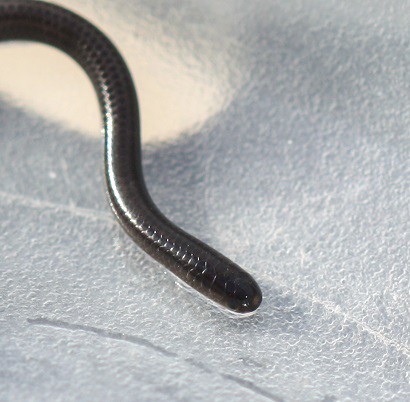
This species is so desperate to escape attention that it digs itself underground. Epictia ater is the main blind snake species of Nicaragua, appearing mainly below 100 metres in altitude. They’re flexible and appear in various forest types, including dry tropical, lowland arid, and lowland premontane forests. Yet few see Taylor’s blind snake, and few photos exist, mainly because they’re masters at coinciding their surface explorations with hours where nobody is around.
Epictia ater has no venom, increasing the need for camouflage. Their body looks black from a distance, but is really dark chocolatey brown, with a yellow tail tip. Either way, Taylor’s blind snake blends superbly with the forest floor, even when they do poke their heads up. Their plan is to fly under the radar, and it’s a plan that has worked for them.
The best bet to spot Epictia ater is post heavy rains, which consistently draw them to the surface. They may be counting on people staying indoors, in shelter, only to be surprised, as rain jackets haven’t really entered their evolutionary databanks yet. This species isn’t 100% blind, but can only distinguish basic changes in light intensity.
